Do I need to wear special glasses to view the solar eclipse in NYC?
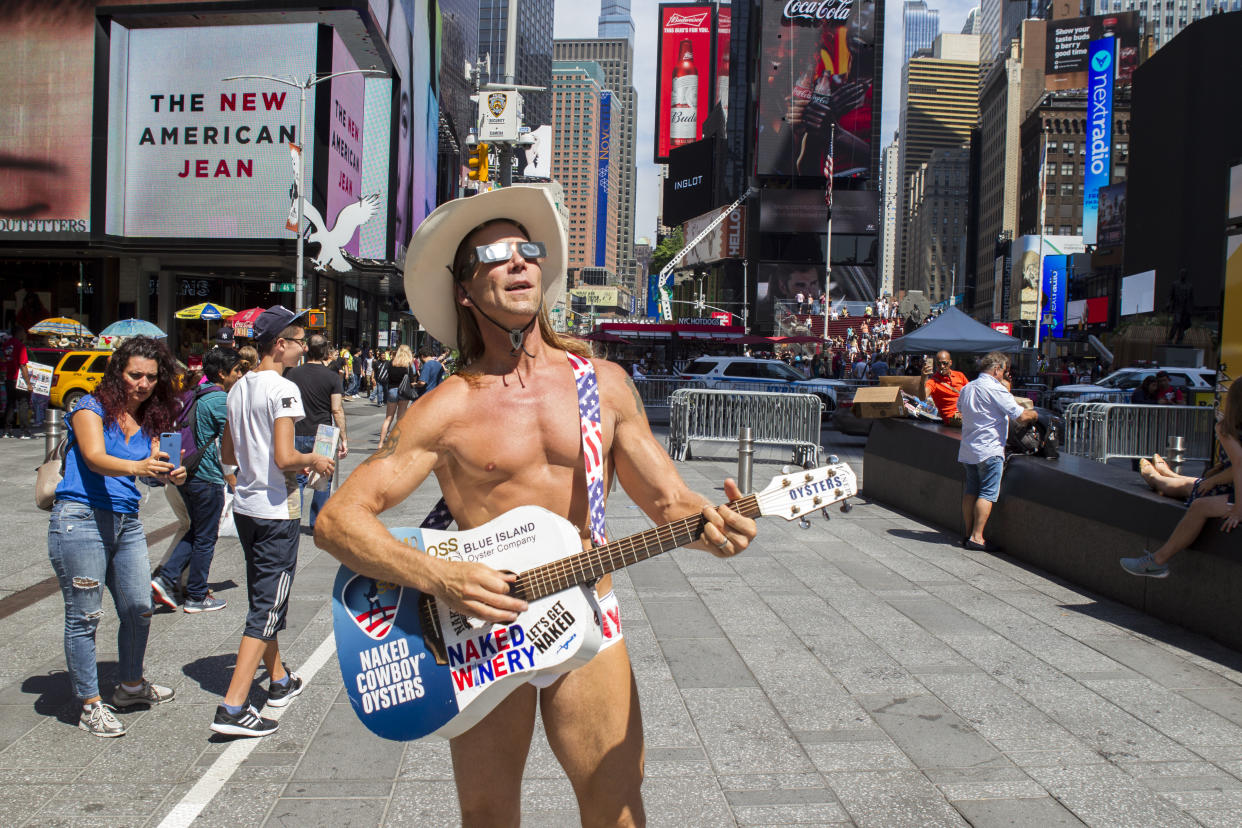
Practice safe specs.
New York City won’t be in the path of totality during the April 8 solar eclipse — all the more reason for Gothamites to wear special protective glasses while geeking out over the rare phenomenon, experts warn.
Only cities and towns within the 4,000 mile-long, 115 mile-wide strip scheduled to experience complete darkness will enjoy a moment where it’s safe to remove the appropriate eyewear and stare.
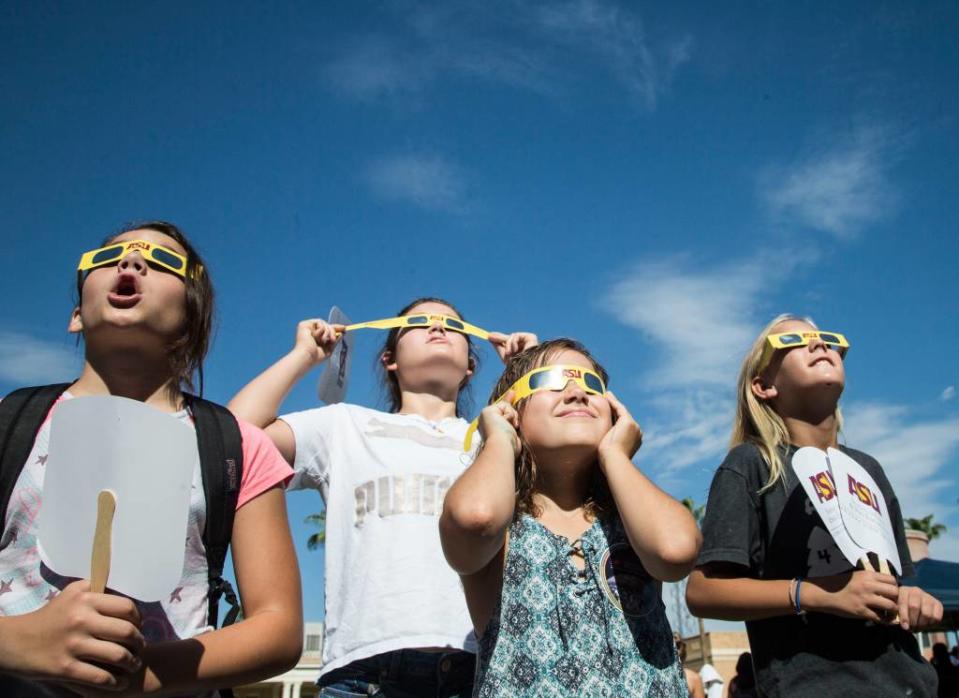
In the Empire State, far-off places like Buffalo, Rochester, Syracuse, Lake Placid and Plattsburgh will be the ones to see the sun completely disappear behind the moon, weather permitting.
Big Apple residents can expect an 89% cover-up during the epic event, which will begin at 2:10pm and end at 4:36pm. Peak darkness will last an unusually long four minutes or so during that time.
Even with just 11% still showing here in the city that never sleeps, normal rules still apply: No staring straight into the sun at any time.
What happens when you look at a solar eclipse
The possible damage to your eyes can happen in seconds, the pros explain.
“Probably every optometrist gets a slew of patients coming in the week after an eclipse,” Lisa Ostrin, an optometrist and research scientist at the University of Houston College of Optometry, told the Washington Post. “They’re complaining of blind spots in their vision or seeing flashes or distortion.”
One New Yorker who risked a peek at the 2017 solar eclipse without proper protection wound up at Mount Sinai’s New York Eye and Ear Infirmary complaining of a black spot in her vision, ABC News reported. Specialists found retinal damage in the shape of the eclipse.
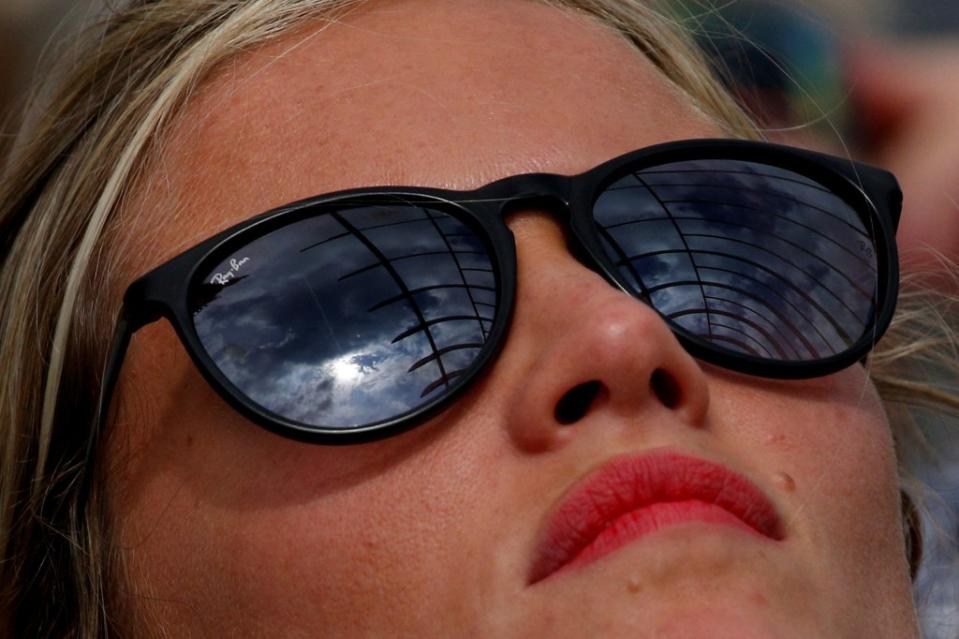
“The dark spot she was describing was in the shape of a crescent,” Dr. Avnish Deobhakta, a Mount Sinai ophthalmologist, told the outlet.
A mere glance can leave you with permanent damage — it just isn’t worth the risk.
“Viewing any part of the bright Sun through a camera lens, binoculars, or a telescope without a special-purpose solar filter secured over the front of the optics will instantly cause severe eye injury,” NASA warned in a statement on eclipse safety.
That absolutely includes phone cameras, too, the agency said. Most of us will be tempted to hold them up to take a snap or video, but make sure you grab a readily available solar filter first.
Pick one up anywhere from B&H to Amazon for less than $10. The cheap and easy precaution will also protect the pricey device and its delicate digital insides from sun damage.
Where to buy glasses to view the solar eclipse
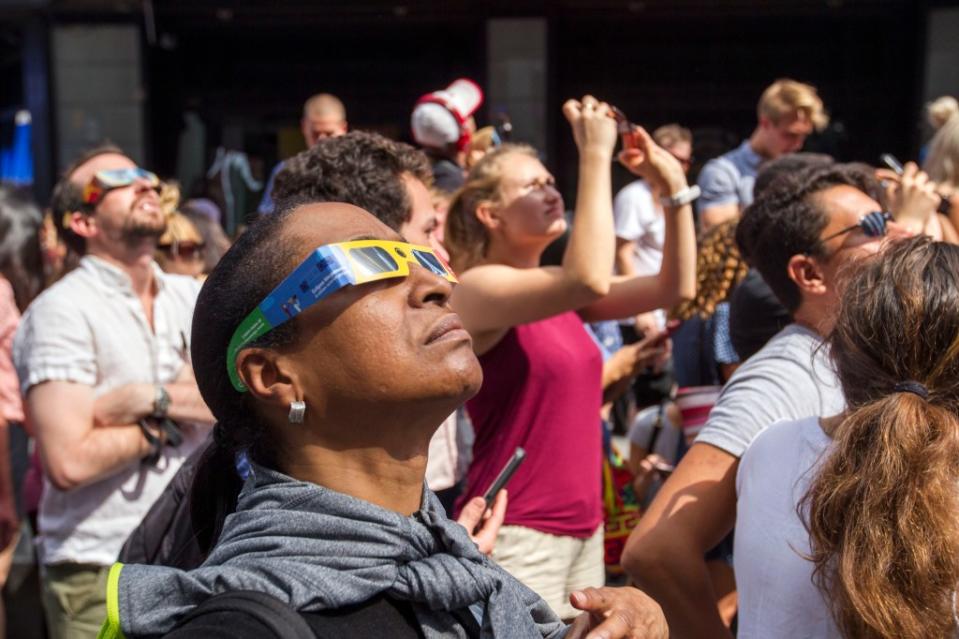
As the event draws closer, expect many retailers to start selling the affordable, typically disposable eyewear.
You can also jump ahead of the rush and snap up a pair from The Post’s vetted-and-approved list of suppliers.
In addition, the American Astronomical Society keeps a list of approved manufacturers — the organization stresses the importance of buying from reliable sources, as opposed to on the street, for example, where the glasses could be below standards and leave the viewer at risk.
Where to get free glasses to view the solar eclipse
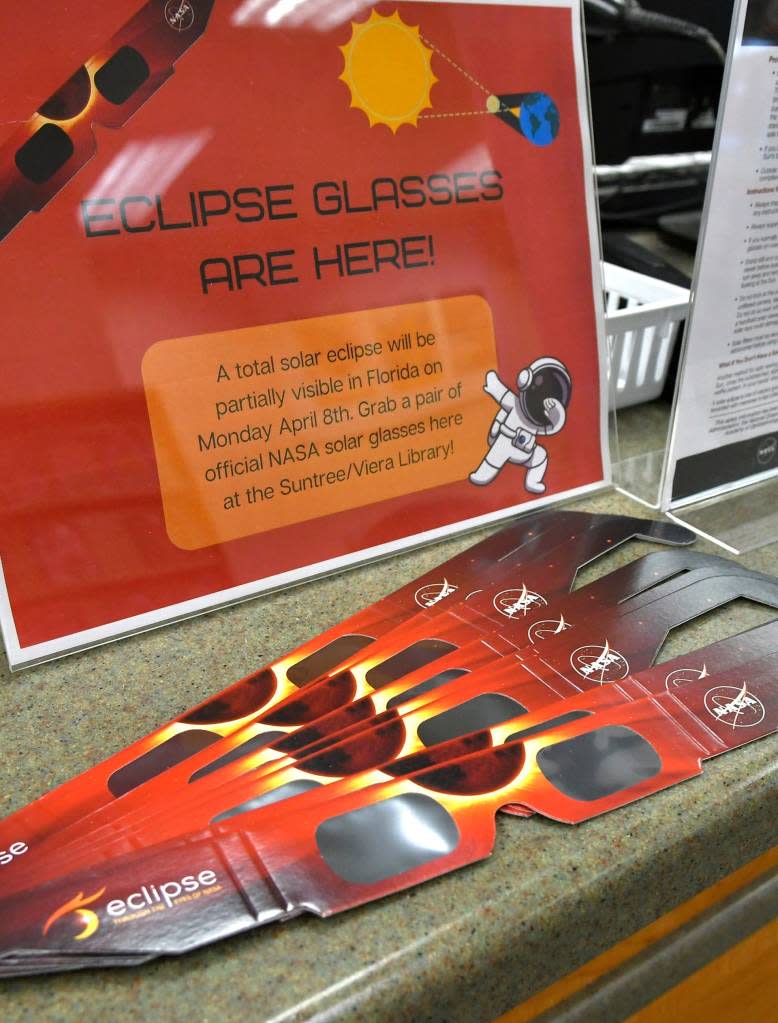
In New York City, the New York Public Library system will hand out glasses on a first-come, first-served basis, beginning Friday Mar. 29.
Retailers are getting in on the action as well — eyeglass vendor Warby Parker will also give away a limited supply of spectacle-safe specs, beginning Apr. 1.
New York State is also handing out free, limited edition I LOVE NY eclipse glasses — a fresh batch will be released daily at the following locations in the greater NYC area, first-come, first-served:
Moynihan Train Hall at the LIRR ticket window
Long island Welcome Center on the Long Island Expressway, EB between Exits 51 and 52
Ardsley, Plattekill and Modena service areas on the New York State Thruway
Hudson Valley Welcome Center at Woodbury Common
How to make your own safe solar viewer
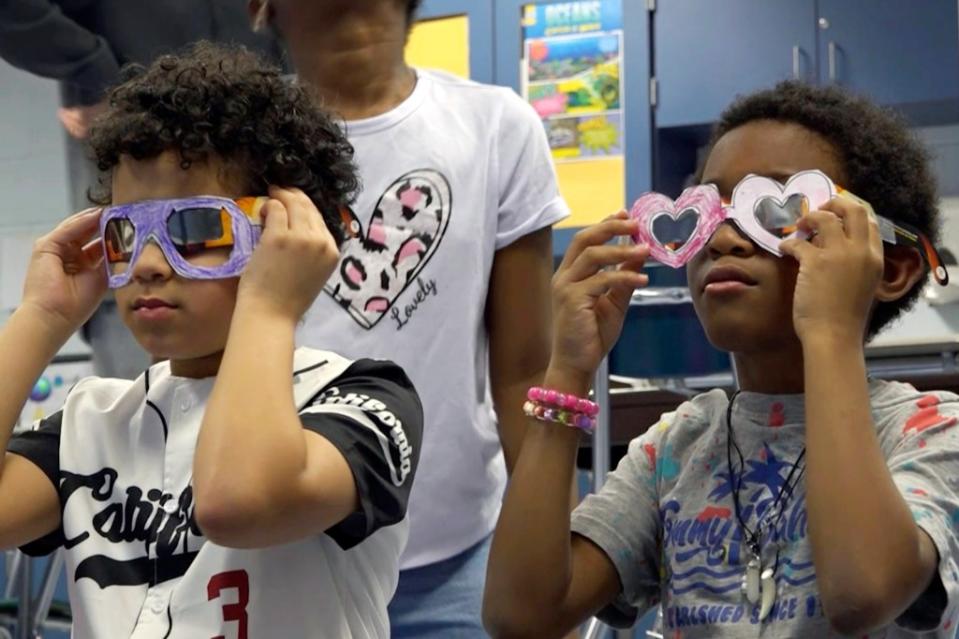
NASA has a handy guide to making your own “eclipse projector” out of cardboard, white paper and aluminum foil.
Neil deGrasse Tyson offered his own advice during a NYC briefing for the 2017 eclipse, the last time the sun nearly disappeared from view in this part of the world.
“Go into your kitchen and get a spaghetti strainer or a colander,” said the science celebrity. “Not with mesh, the kind with holes in it. Go outside and hold that up over the ground. Each one of those holes will act as a pinhole camera and you’ll see hundreds of images of the crescent sun on the ground and you can watch the eclipse unfold safely…that’s the urban version of watching the pinhole camera images through the modeled light of sunlight passing through the leaves of a tree. It’ll just be fun.”
How to stay safe during a solar eclipse, according to NASA
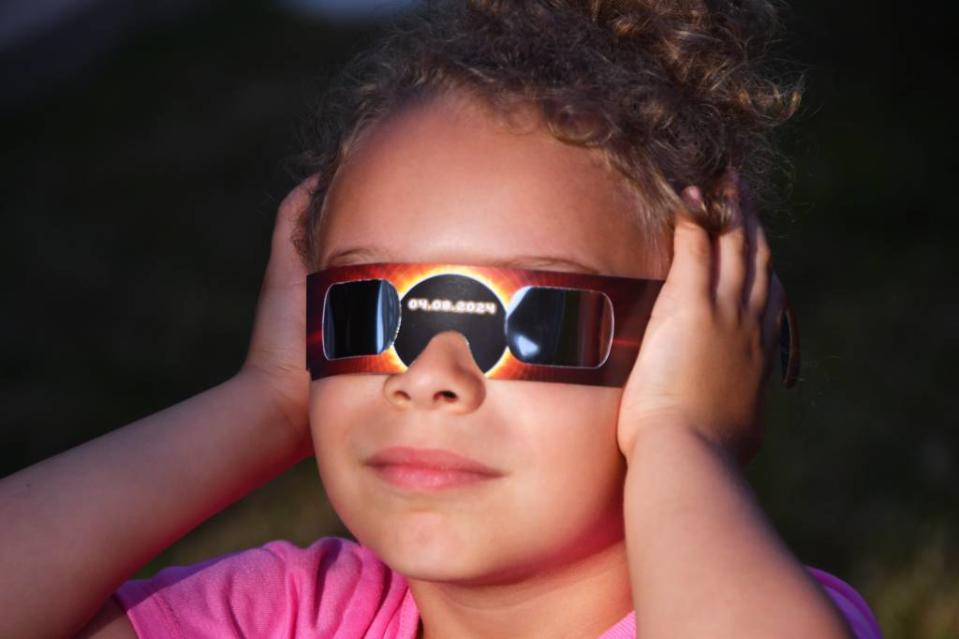
View the Sun through eclipse glasses or a handheld solar viewer during the partial eclipse phases before and after totality.
You can view the eclipse directly without proper eye protection only when the Moon completely obscures the Sun’s bright face – during the brief and spectacular period known as totality. (You’ll know it’s safe when you can no longer see any part of the Sun through eclipse glasses or a solar viewer.)
As soon as you see even a little bit of the bright Sun reappear after totality, immediately put your eclipse glasses back on or use a handheld solar viewer to look at the Sun.

